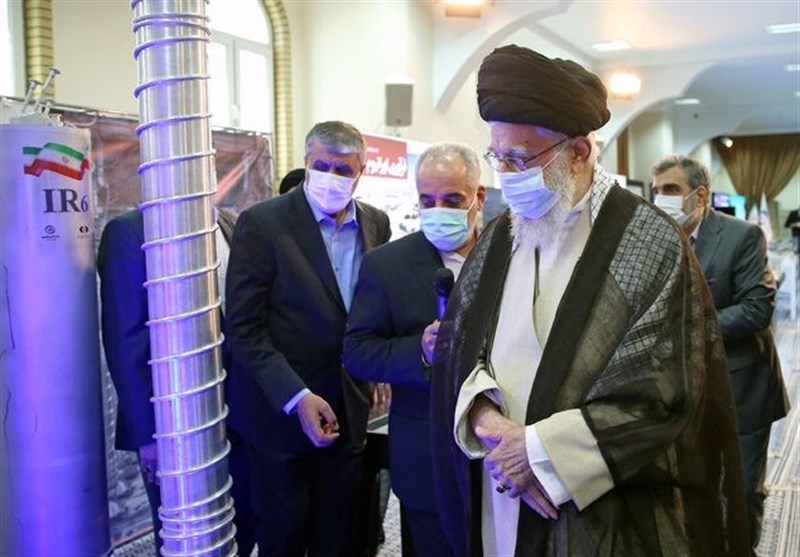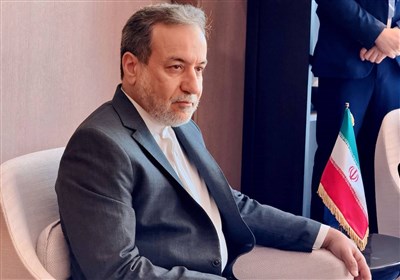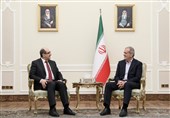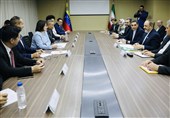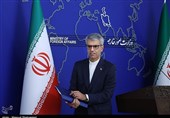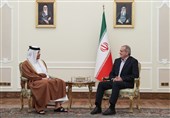Ayatollah Khamenei Visits Nuclear Industry Achievements Exhibition in Tehran
TEHRAN (Tasnim) – Leader of the Islamic Revolution Ayatollah Seyed Ali Khamenei visited an exhibition showcasing Iran’s nuclear industry achievements at the Imam Khomeini Hussainiyah in Tehran on Sunday morning.
The exhibition highlighted the significant accomplishments of Iranian nuclear experts and researchers in areas vital to people's livelihoods.
Key sectors such as medicine, pharmaceuticals, industrial, agriculture and food, energy, water, and power plant construction, as well as geology were prominently featured.
Iranian scientists' achievements in "indigenous technology and knowledge in the nuclear fuel cycle" were another focal point of the exhibition. Researchers and experts provided necessary explanations to the Leader of the Islamic Revolution.
"One hundred thirty tellurium isotope" stood out among the accomplishments, obtained by young nuclear industry scientists through the design, construction, and launch of a chain of 20 centrifuge machines. This isotope finds significant applications in medicine, particularly in the production of raw materials for radiopharmaceuticals, diagnosis of various cancers and incurable diseases, pharmaceuticals, industrial sectors, geology, agriculture, and nuclear sciences. Iranian researchers have successfully produced over 50 diagnostic, palliative, and therapeutic radiopharmaceuticals using nuclear knowledge.
Another achievement in the field of medicine is the development of "Hemostatic powder" or "blood clotting agent." Iran is now among the five countries with the technical knowledge to produce this medical product, thanks to the efforts of its scientists. It has a high application in surgeries to prevent bleeding.
The exhibition also showcased achievements in energy and water, including the construction of power plants on the country's southern and northern coasts, small-scale indigenous power plants, and desalination complexes in Bushehr. Detailed explanations of these accomplishments were provided in the exhibition.
Furthermore, the event highlighted the significant role of nuclear knowledge in ensuring food security and advancing agriculture. Nuclear knowledge, specifically in the areas of "plasma, biological, and irradiation," has played a crucial role in combating agricultural pests, sterilizing cereals and food products, and increasing their shelf life.
The industrial sector and environmental protection have also benefited from nuclear knowledge. The design and construction of the "electrostatic electron accelerator" system for industrial wastewater treatment has brought about a fundamental transformation in the rubber and polymer industries. Additionally, nuclear precision instruments such as "radio-metrics" and "industrial springs" have found applications in quality control, material level determination inside tanks, density measurement, humidity measurement, and thickness measurement across various industries.
Plasma technology, presented in the exhibition, has been successfully used in treating pharmaceutical wastewater, hospital waste, landfill leachate, converting heavy oil to light oil, and addressing various cancers. It has also shown effectiveness in treating chronic wounds, including diabetic ulcers.
Another achievement presented at the exhibition was the production of deuterium compounds through heavy water processing. The prevention of crude sales derived from these compounds has led to various products with applications in electronics and health.
The exhibition also emphasized the indigenization of components and equipment in mining and power plants. Iran's domestic nuclear knowledge now enables the entire nuclear fuel cycle, including exploration, extraction, yellowcake production, uranium processing, enrichment, fuel pellet and rod fabrication, nuclear fuel management inside the reactor core, and reactor waste management.
The exhibition highlighted the significant scientific achievement of applying nuclear knowledge in the mining, oil, and petrochemical industries. Using airborne geophysics, Iran can now identify various mines and oil wells up to a depth of 15,000 meters.
It also provided a comprehensive overview of Iran's nuclear industry achievements and the valuable contributions of nuclear knowledge across various sectors.
